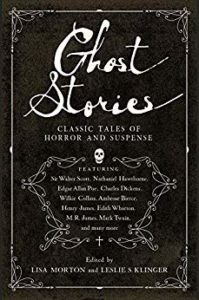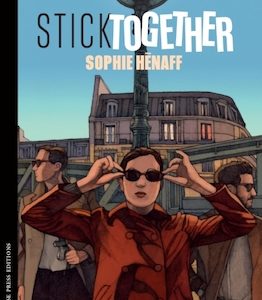In December of 1847, John D. Fox moved his family to a house in Hydesville, New York. Although the house had an odd reputation (the previous tenant had vacated because of mysterious sounds), it wasn’t until March of the following year that the family’s troubles began. Before long, daughters Kate and Margaret claimed to be communicating with the spirit of a peddler who had been murdered in the house. The communications took the form of rapping noises in answer to questions asked aloud.
The Fox sisters (along with a third sister, Leah, who acted as their manager) soon parlayed their rapping skills into celebrity. The young ladies held public séances, underwent “tests,” and inspired copycat mediums around the world. By the time the Foxes were debunked, they’d helped to inspire a new religion, Spiritualism, which was popular in both America and Great Britain, that held as its central tenet that the spirits of the dead continued to exist on another plane and could be contacted by human mediums. The Spiritualist movement had no less a figure as its international spokesperson than Sir Arthur Conan Doyle, whose wife Jean was also a medium.
Both Spiritualism and the acknowledged, fictitious ghost story evolved out of the Enlightenment of the eighteenth century.It’s no coincidence that the ghost story experienced a rebirth of popularity at about the same time. Both Spiritualism and the acknowledged, fictitious ghost story evolved out of the Enlightenment of the eighteenth century. Prior to that time, ghosts had either been confined to dramatic presentation (going all the way back to the haunted house comedy Mostellaria, penned by the Roman playwright Plautus several centuries before the birth of Christ) or tales that were presented as true, including mythological epics like Gilgamesh and the Iliad.
The first major work of ghostly literature is usually considered to be Horace Walpole’s The Castle of Otranto. Published in 1764, Walpole’s work also inaugurated the Gothic novel, a genre that waxed and waned over the next fifty years. Ghosts were a key ingredient in the great Gothics, even when—as in the works of Ann Radcliffe, the undisputed queen of the Gothics—their manifestations were eventually revealed to be the work of deceitful mortals.
But perhaps the real precursor of the modern short ghost story was the ballad. Ballads were the preferred way of telling stories (at least in the British Isles) up until the nineteenth century, and many of them were ghost stories. Like “Sweet William’s Ghost” (sometimes known under the alternate title “Clerk Saunders”), presented below, these ballads and their numerous regional variants still retain a surprising amount of pathos, eeriness, and even a touch of gruesomeness.
As the Enlightenment brought a new belief in reason to Europe, formerly popular superstitions were reconfigured as fairy tales, intended as simple morality tales mainly for children . . . but not always. While the Brothers Grimm were collecting orally-transmitted folktales, eventually published in 1812’s Kinder und Hausmärchen, other German anthologists found success in updating these old stories for adults. Johann August Apel and Friedrich Laun produced not one, but a remarkable five volumes of their ghost story anthology Gespensterbuch between 1811 and 1815. These tales, which, like The Castle of Otranto, typically involved aristocratic families enduring melodramatic plot twists in isolated, haunted castles, were translated into French and English. Mary Shelley cited a volume of such stories as the inspiration for her to “think of a story,” resulting in the creation of her immortal classic Frankenstein.
It wasn’t until 1828 that what is generally considered the first modern ghost story appeared: Sir Walter Scott’s “The Tapestried Chamber,” included in this volume. Although Scott’s tale kept certain tropes of the earlier works—the traveler who arrives in the isolated castle, for example—his tale is comparatively succinct and atmospheric, with chilling descriptions that would almost fit into any modern horror tale:
Upon a face which wore the fixed features of a corpse, were imprinted the traces of the vilest and most hideous passions which had animated her while she lived.
Ghosts found a willing home in the New World, too. When Nathaniel Hawthorne, one of early America’s finest writers, turned his attention to uncanny fiction, he finely portrayed a young country still trying to define itself. While his “Young Goodman Brown” exposed the hypocrisy of religious convictions with its tale of a journeyer who stumbles on a witches’ sabbat, “The Gray Champion,” below, became possibly the first political ghost story, offering up a patriotic defender of freedom (a theme that Arthur Machen would employ a century later in “The Bowmen,” also below). A few decades later, the American creator of both the modern horror story—in all its psychological and bloody glory—and the detective story, Edgar Allan Poe, would create what might be the first major story of spirit possession, with the ravishingly romantic and disturbing “Ligeia,” found below.
Why do we read ghost stories? To scare ourselves? … To experience a catharsis of the emotions? To reinforce our desire to know that life does not end with the mortal body’s termination?But it took the arrival of Spiritualism to really unleash the ghost story. By the 1870s, Spiritualism had millions of followers in both the United States and the British Isles, spurred on by the works of mystic philosophers like Emanuel Swedenborg, non-fiction books like Catherine Crowe’s 1848 The Night-side of Nature, and devastating events like the American Civil War that left parents, spouses, and siblings bereft and grieving for lost loved ones. The rise of Spiritualism in the nineteenth century is often thought of as a reaction to the scientific materialism of the Enlightenment, and indeed, even the Spiritualists at the time acknowledged this. As Crowe put it:
The contemptuous scepticism of the last age is yielding to a more humble spirit of enquiry; and there is a large class of persons amongst the most enlightened of the present, who are beginning to believe, that much which they had been taught to reject as fable, has been, in reality, ill-understood truth.
Just as wealthy Victorians on both sides of the Atlantic were flocking to séances in hopes of seeing a table levitate or hearing a dead loved one miraculously channeled by an attractive young medium, so at home they consumed ghost stories in the pages of the magazines that had become popular thanks to new printing technologies. Many of the ghost stories in this volume reflected Spiritualist beliefs; in some (“Mrs. Zant and Ghost” by Wilkie Collins, for example), the true horror was a mortal antagonist, while in others (Elizabeth Stuart Phelps’s “Since I Died,” or Olivia Howard Dunbar’s “The Shell of Sense”), the human inability to grasp the cosmos was a source of terror.
Not all of the late-nineteenth-century ghost stories were influenced by Spiritualism, however. The study of folklore was in vogue, thanks to efforts like Chambers’ Book of Days; ghost stories were traditional Christmas entertainments (not on, as is now the case, Halloween!), and often played on folklore (Charlotte Riddell’s marvelously entertaining “The Last of Squire Ennismore”) and urban legend (Dickens’ “No. 1 Branch Line: The Signalman”), both reprinted here.
As the nineteenth century headed into the twentieth, Spiritualist mediums were continually debunked, leading to a serious decline in the belief, at least until the Great War again made families yearn to communicate with their dead. This led to authors seeking fresh ways to carry the ghost story forward. Instead of looking toward the past, some ghost stories included here (Ambrose Bierce’s unsettling “An Inhabitant of Carcosa,” and Frank Stockton’s “The Philosophy of Relative Existences”) turned to the future; some took a more literary approach (Edith Wharton’s chilling “The Lady’s Maid’s Bell,” and “The Real Right Thing,” a literary ghost story about a literary ghost, by Henry James); and at least one (Mark Twain’s deliciously over-the-top “A Ghost Story”) parodied both the genre and the fervent true believer.
The stage was set for a true master of the ghost story, someone both well aware of its history and gifted with a genius for crafting the bone-chilling scene, to refine the essence of the ghost story. That person was M. R. James, whose 1904 collection Ghost Stories of an Antiquary became one of the most critically acclaimed and influential ghost story collections of all time. James’s ghosts are not the typical flimsy, translucent phantoms of yore, but something altogether stranger and more frightening, as in this description from a vision the protagonist has in “Oh, Whistle and I’ll Come to You, My Lad,” also found in this volume:
. . . but now there began to be seen, far up the shore, a little flicker of something light-coloured moving to and fro with great swiftness and irregularity. Rapidly growing larger, it, too, declared itself as a figure in pale, fluttering draperies, ill-defined. There was something about its motion which made Parkins very unwilling to see it at close quarters.
The final story chosen for this volume, Georgia Wood Pangborn’s “The Substitute,” is well-positioned to point the way for the future of weird fiction: its terrors are subtle and tragic, its prose beautifully rendered. If its overall effect is slightly more hopeful than many of the tales that preceded it, its hope stems from that “impression of truth” that M. R. James was right in suggesting was an essential element of the classic ghost story.
Why do we read ghost stories? To scare ourselves? To rehearse how we would deal with an actual ghost experience? To experience a catharsis of the emotions? To reinforce our desire to know that life does not end with the mortal body’s termination? Probably all of the above—but for whatever reason, the ghost story has fascinated humankind since the dawn of time. What follows are, in our humble opinions, some of the very best. So—boo!
__________________________________
Excerpted from Ghost Stories, edited by Lisa Morton and Leslie R. Klinger, introduction by Leslie Klinger. Copyright © 2019 by Lisa Morton and Leslie S. Klinger. Published by Pegasus Books.


















